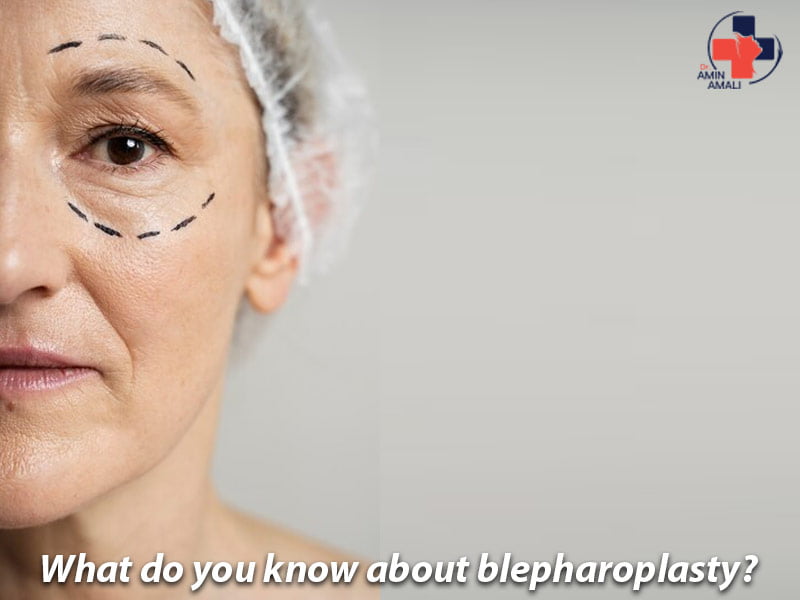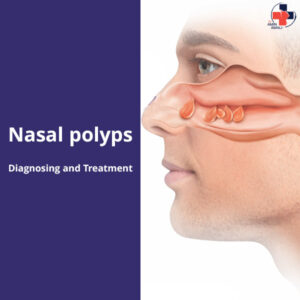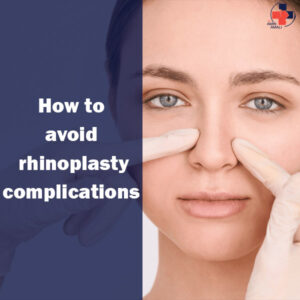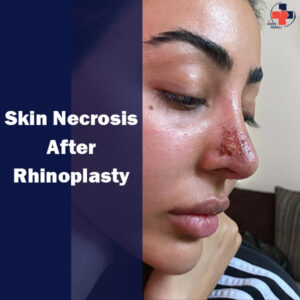Blepharoplasty, also known as eyelid surgery, is a popular cosmetic procedure that aims to improve the appearance of the eyelids by removing excess skin, fat, and muscle. The procedure can be performed on both the upper and lower eyelids, and it is often done to correct droopy eyelids, bags under the eyes, and other signs of aging around the eyes. In this article, we will discuss everything you need to know about blepharoplasty, including the benefits, risks, and recovery process.

Benefits of Blepharoplasty
Blepharoplasty can provide a number of benefits for those who are unhappy with the appearance of their eyelids. Some of the most common benefits of the procedure include :
Improved Appearance: Blepharoplasty can help to improve the appearance of the eyelids by removing excess skin, fat, and muscle. This can help to reduce the appearance of wrinkles, bags under the eyes, and other signs of aging around the eyes.
Enhanced Vision: In some cases, excess skin on the upper eyelids can obstruct vision. Blepharoplasty can help to remove this excess skin, improving vision and making it easier to see.
Increased Confidence: Many people who undergo blepharoplasty report feeling more confident and self-assured after the procedure. This can be especially true for those who have been self-conscious about their eyelids for many years.
what is the best age for blepharoplasty with reason ?
The best age for blepharoplasty, or eyelid surgery, can vary depending on the individual’s specific needs and concerns. Generally, the procedure is most commonly performed on individuals who are in their 40s, 50s, or 60s, as this is when the signs of aging around the eyes tend to become more noticeable.
However, there is no specific age limit for blepharoplasty, and the decision to undergo the procedure should be based on an individual’s unique circumstances and goals. Some younger individuals may also benefit from blepharoplasty if they have inherited traits that cause droopy or puffy eyelids, or if they have experienced significant weight loss that has resulted in excess skin around the eyes.
Ultimately, the best age for blepharoplasty will depend on factors such as the individual’s overall health, skin elasticity, and specific concerns about the appearance of their eyes. It is important to consult with a qualified plastic surgeon to determine if blepharoplasty is the right choice and to discuss the best timing for the procedure.
What its like to do blepharoplasty procedure ?
Blepharoplasty is a surgical procedure that involves removing excess skin, fat, and muscle from the eyelids to improve their appearance and function. The procedure can be performed on the upper eyelids, lower eyelids, or both, depending on the patient’s needs.
During the procedure, the surgeon will make incisions in the natural creases of the eyelids to minimize scarring. They will then remove or reposition the excess tissue and close the incisions with sutures. After the procedure, patients may experience some swelling, bruising, and discomfort, which can be managed with pain medication and cold compresses.
It is important to follow the surgeon’s post-operative instructions carefully to ensure proper healing and minimize the risk of complications. Overall, blepharoplasty can be a safe and effective way to improve the appearance of the eyelids and enhance the patient’s overall facial aesthetics.
Risks
Like any surgical procedure, blepharoplasty does come with some risks. Some of the most common risks associated with the procedure include:
- Bleeding: Bleeding is a common risk associated with any surgical procedure. In some cases, bleeding can be severe and require additional medical attention.
- Infection: Infection is another common risk associated with any surgical procedure. Patients who undergo blepharoplasty are at risk of developing an infection in the incision site.
- Scarring: While scarring is a natural part of the healing process, some patients may experience more noticeable scarring after blepharoplasty.
- Dry Eyes: Some patients may experience dry eyes after blepharoplasty. This is usually a temporary side effect that can be managed with eye drops.
- Vision Changes: In rare cases, patients may experience changes in vision after blepharoplasty. This can include double vision, blurred vision, or other visual disturbances.
Recovery Process
The recovery process for blepharoplasty can vary depending on the extent of the procedure and the individual patient. In general, patients can expect to experience some swelling and bruising around the eyes for the first few days after the procedure. Patients will need to keep their head elevated and apply cold compresses to the eyes to help reduce swelling. They may also need to take pain medication and antibiotics to help manage pain and prevent infection.
Most patients are able to return to work and other normal activities within 7-10 days after the procedure. However, it is important to avoid strenuous activities and heavy lifting for several weeks after the procedure to allow the incisions to heal properly. It is also important to avoid rubbing or touching the eyes during the recovery process, as this can increase the risk of infection and other complications.
The best nutrition after blepharoplasty
After blepharoplasty, it is important to follow a healthy and balanced diet to support the healing process and promote optimal recovery. Here are some general nutrition tips that may be helpful :
- Stay hydrated: Drink plenty of water and other fluids to keep your body hydrated and help flush out toxins.
- Eat a balanced diet: Consume a variety of nutrient-dense foods, including lean protein, whole grains, fruits, and vegetables. These foods can provide your body with the vitamins and minerals it needs to heal and recover.
- Avoid processed foods: Try to limit your intake of processed and packaged foods, as they can be high in sodium and other additives that may slow down the healing process.
- Incorporate anti-inflammatory foods: Foods that are high in antioxidants and anti-inflammatory compounds, such as berries, leafy greens, and fatty fish, may help reduce swelling and inflammation.
- Consider supplements: Talk to your doctor about whether taking supplements, such as vitamin C, vitamin E, and zinc, may be beneficial for your recovery.
Remember to always follow your doctor’s specific instructions regarding post-operative care and nutrition after blepharoplasty.












